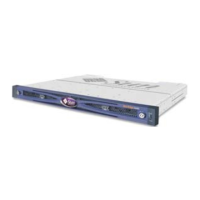5-8 Sun StorEdge 3000 Family Installation, Operation, and Service Manual • May 2004
Note – Each operating environment or operating system has a method for
recognizing storage devices and LUNs and might require the use of specific
commands or the modification of specific files. Be sure to check the information for
your operating environment to ensure that you have performed the necessary
procedures.
For information about different operating environment procedures, refer to:
■ Appendix F, “Configuring a Sun Server Running the Solaris Operating
Environment” on page F-1
■ Appendix G, “Configuring a Windows 200x Server or Windows 200x Advanced
Server” on page G-1
■ Appendix H, “Configuring a Linux Server” on page H-1
■ Appendix I, “Configuring an IBM Server Running the AIX Operating
Environment” on page I-1
■ Appendix J, “Configuring an HP Server Running the HP-UX Operating
Environment” on page J-1
■ Appendix K, “Configuring a Windows NT Server” on page K-1
13. Reset the controller.
Configuration is complete.
Note – Resetting the controller can result in occasional host-side error messages
such as parity error and synchronous error messages. No action is required and the
condition corrects itself as soon as reinitialization of the controller is complete.
14. Save the configuration to a disk. See “Saving Configuration (NVRAM) to a Disk”
on page 6-52.
15. Make sure that the cabling from the RAID array to the hosts is complete.
Note – You can reset the controller after each step or at the end of the configuration
process.
Caution – Avoid using in-band and out-of-band connections at the same time to
manage the array. Otherwise, conflicts between multiple operations can cause
unexpected results.

